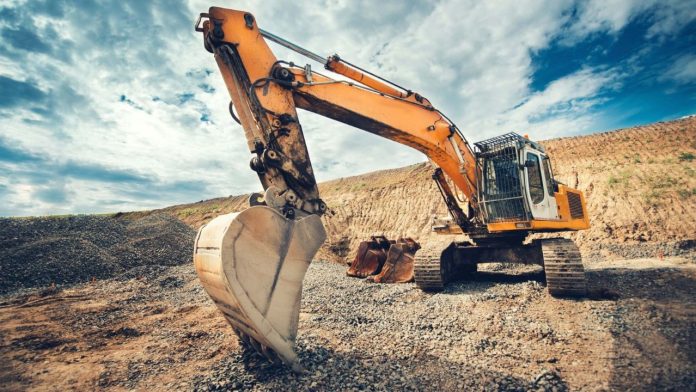The choice of an excavator in the heavy equipment market can spell the difference between successful job operation and unforeseen failure. Potential customers usually look at the models available in the excavator for sale before deciding on buying a particular model to make comparisons on performance, life span and price. A useful source is at https://ktheavy.com/excavator-for-sale/ with an extensive machine listing. Knowledge of major specifications is needed to align the excavator with the site requirements, work needs, as well as long-term investment objectives.
Machine Class and Operating Weight
Among the most basic requirements is operating weight, which shows the weight of the machine that is available when it is ready to operate, taking into account fuel and fluids and the typical attachments. Operating weight is used to find out which machine you have: mini, midi or full-size. Small excavators are typically in the range of a few tons, with full-size machines often tens of tons. The course influences mobility, transportation needs, and work site fit. Machines that are weaker than their weight capacities tend to be unstable or prone to breakdown, and it is important to select a machine whose class corresponds to the amount of work.
Torque, Engine Power, and Performance
The engine of an excavator is the source of power and the key to all functions of an excavator. Horsepower and torque rating indicate its ability to drive hydraulic systems, lift loads and remain on task. Greater engine power enhances Digging, lifting and swinging cycle times. Nevertheless, the modern machines are not only concerned about fuel efficiency but also emission compliance; therefore, a buyer needs to find a middle ground between the output and the cost of running the machine. Most manufacturers match hydraulic pumps and engine maps in such a way that they provide load-based
Depth, Reach, and Dump Height
In the case of excavation activities, the depth of the excavation is critical as it determines the depth that the machine can dig with its arm and bucket into the ground. Maximum reach, the horizontal distance between the machine centerline and the bucket tip, is also important in combination with other factors such as the jobs that need clearance or access over obstacles. Another parameter is dump height, which indicates the height at which the excavator is able to lift and remove materials into trucks or piles. Alignment of these dimensions to project site requirements will ensure that machines performing below optimal level do not constrain job scope or induce errors.
Bucket Capacity and Breakout Force
Bucket capacity is considered the amount of material that can be carried during a cycle of the bucket. Increasing the bucket capacity will enable making fewer passes, which benefits the productivity, but it has to be compared with the power and hydraulic capacity. Breakout force is the force that the bucket can exert when cutting through hard material. A greater breakout force means cutting through difficult soils or rock. These specifications are connected: too much bucket volume relative to the necessary.
Tracks, Undercarriage, and Stability
The undercarriage carries the excavator and has a direct influence on traction, maneuverability and wear. The type of track (steel or rubber), width and design affect ground pressure and stability. The broader the track shoes, the less ground pressure, thereby aiding in soft soils by eliminating sinking. Also, counterweight design and overall machine balance contribute to the excavator’s ability to resist tipping with heavy lifts. Its undercarriage must be stable, so that the full capabilities of the machine can be used safely.
Swing, Tail Swing, Maneuverability
The swing action of the excavator defines the rotation of the house. The normal tail swing machines leave the tracks when rotating, necessitating clearance, but the zero tail or reduced tail swing models do not leave the track, making them advantageous in tight job locations. Agility is frequently a determining factor in urban or restricted locations. Customers operating in these conditions tend to prefer smaller designs that do not sacrifice any swing capability.
Comfort, Cab Features, and Controls
Comfort and visibility determine the efficiency of the operator. The design of the cab, the ergonomics of seats, noise damping, climate control, and digestible control interfaces all contribute to fatigue reduction and precision. Graphic displays on screens reporting diagnostics, service schedules, and operating measures have become the norm in much of the current generation of machines. The camera systems and good visibility contribute to safety and ease of operation.
Repair, Spares Supply, and Service
The optimum specifications are only practical provided that the machine is reliable to maintain. The buyer must never neglect service networks, availability of spare parts and easy access to maintenance services, access to service points, modularity in components, and diagnostics. A dealer/manufacturer that is reputable with good support will provide ease in operations and less downtime. This is one of the items that many excavator for sale sellers focus on in their value proposal.
Conclusion
Lastly, being an excavator does not only require a purchase price. The total cost of ownership is made up of fuel consumption, maintenance, consistent performance, and ultimate resale value. Quality machinery that is constructed with hardy assets tends to have a better resale value. A knowledgeable customer will look at the big picture- the cost of operation versus the long-term investment payoff.

